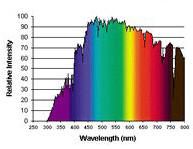
Sunlight at Noon
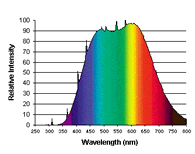
UltraLux Full Spectrum Lighting
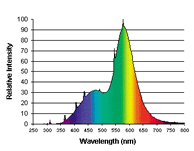
Cool White
For my regular nature photography, I use Moose Peter's Cloudy -3 white balance setting and I am very happy with the results from my Nikon D100. The trouble started when I was nominated to take the Christmas family portrait. This was indoors where I have replaced almost all incandescent bulbs with energy efficient compact fluorescents. The lighting was supposed to be 'Flash' but the ambient light provided a substantial color shift. Being forced to cope with mixed lighting on this and on a few subsequent occasions where I was dealing with artificial lighting, strongly suggested that I should seek a better understanding of White Balance.
There are two, very distinct and different white balance settings. The first and most important is the setting for the light source profile. The choices for this setting will probably be selections like "Daylight", "Incandescent", "Flash", etc. Secondly, there is a color temperature adjustment that fine-tunes the currently selected light source profile. Before setting a White Balance color temperature, be sure to select an appropriate light source profile. A preponderance of white balance discussions seem to focus upon the color temperature value and generally seem to underemphasize the much more significant active light source profile setting. This was confusing for me until I thought through the facts and created the three pictures at the bottom of this page.
|
Sunlight at Noon |
UltraLux Full Spectrum Lighting |
Cool White |
A spectrographic chart of daylight will indicate that daylight is comprised of many wavelengths, each at some amplitude.
A spectrographic chart of light from a 'full spectrum' artificial light source is comprised of many wavelengths, each at some amplitude, usually at least some wavelengths will be different than actual daylight.
A Cool White fluorescent light source has another, very different graph of wavelength amplitude values.
When we take a photograph illuminated by a 'Cool White' fluorescent light source, can we expect the light source amplitude profile to be the same as for a daylight light source? Of course not! In fact, different light sources require a change of the entire light source 'profile'. If the change is restricted to only variations of one light source, say natural sunlight, then sliding the amplitude hump of profile higher or lower may be close enough. When we desire to change to a totally different light source, then we must change the shape of the profile itself and not simply slide an averaged color temperature value up or down.
Testing with Nikon Capture 4 image editing software, using the same .NEF image and changing from "Daylight, Direct sunlight" at 4500 to "High Color Rendering Fluorescent, 3700" at 4500 I see a very noticeable color shift! Changing to "Standard Fluorescent, Cool White" at 4500 degrees again results in another, different color shift. All three pictures have the same color temperature, 4500 degrees.
The message here is to set the White Balance 'base' profile type as close as possible to the light source and be prepared that color compensation tuning will be necessary if the source is much different than the base profile used. The color temperature setting is only a tuning to the active profile selected, not a means of adjusting for different light source profiles.
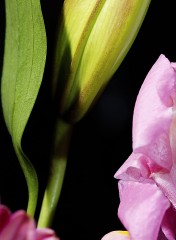 Daylight |
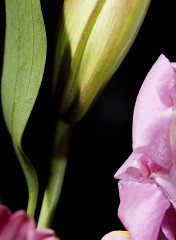 High Color Rendering Fluorescent |
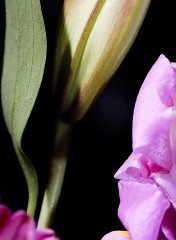 Standard Fluorescent |
| The White Balance on all three pictures above are all set to 4500 degrees. They are however from different lighting type settings. Notice the distinctly different color casts. (These pictures were created using the Nikon Capture 4 program to change the white balance on a NEF, raw picture.) (The picture was taken indoors under mixed Flash and Compact Fluorescent lightings. This is a crop, a part of a larger picture.) |
Page created by: mike@mikebaker.com